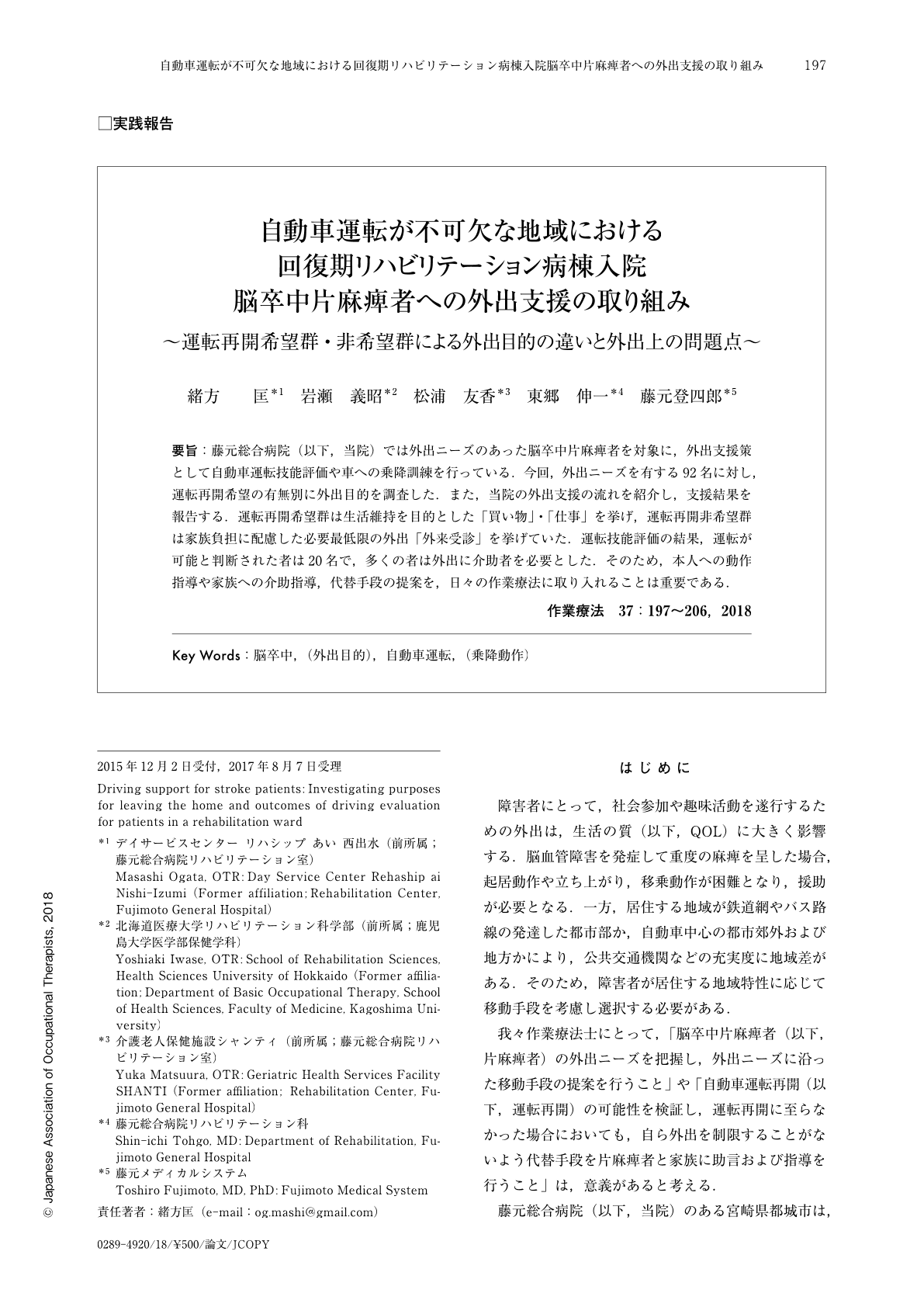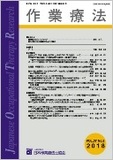Japanese
English
- 販売していません
- Abstract 文献概要
- 1ページ目 Look Inside
- 参考文献 Reference
- サイト内被引用 Cited by
要旨:藤元総合病院(以下,当院)では外出ニーズのあった脳卒中片麻痺者を対象に,外出支援策として自動車運転技能評価や車への乗降訓練を行っている.今回,外出ニーズを有する92名に対し,運転再開希望の有無別に外出目的を調査した.また,当院の外出支援の流れを紹介し,支援結果を報告する.運転再開希望群は生活維持を目的とした「買い物」・「仕事」を挙げ,運転再開非希望群は家族負担に配慮した必要最低限の外出「外来受診」を挙げていた.運転技能評価の結果,運転が可能と判断された者は20名で,多くの者は外出に介助者を必要とした.そのため,本人への動作指導や家族への介助指導,代替手段の提案を,日々の作業療法に取り入れることは重要である.
92 inpatient hemiplegic stroke patients were evaluated in terms of ability to drive and exercise. We analyzed the patients' reasons for wanting to drive, and determined whether or not they could resume driving. The results of our analysis indicate that the subjects who wished to resume driving intended to maintain their lifestyle through “shopping” and “work”. The subjects not wanting to resume driving only wanted to consult with physicians outside the home and did not want to put undue burden on their families. As a result of the driving evaluation, 20 cases were judged to be able to operate an automobile. Most patients were unable to drive, and thus needed a caregiver to leave the house. Therefore, it is important to teach motion guidance to patients, assistance guidance to patient's family, and activities apart from driving. It is important to incorporate these into day-to-day occupational therapy.

Copyright © 2018, Japanese Association of Occupational Therapists. All rights reserved.


